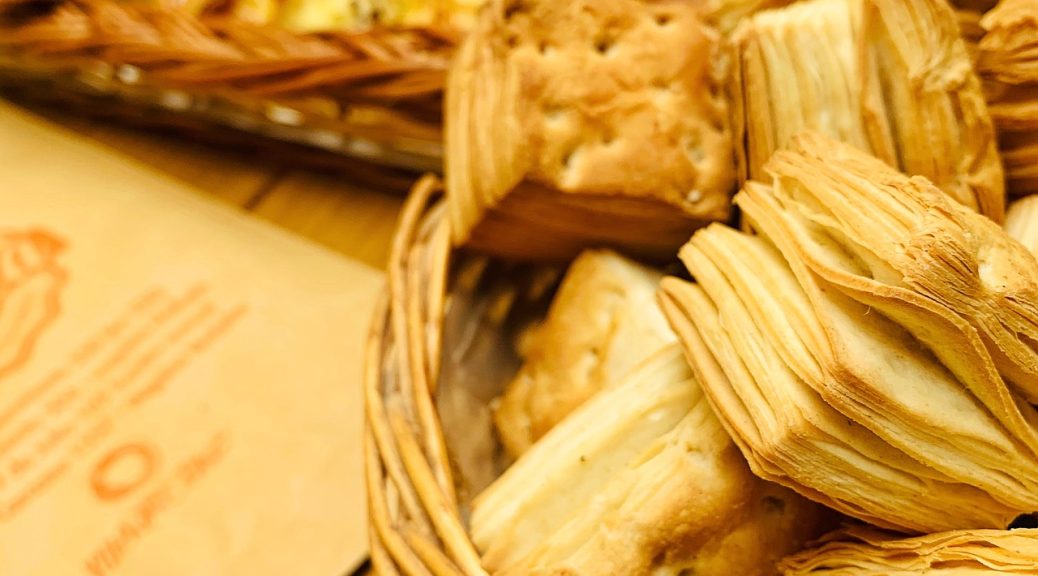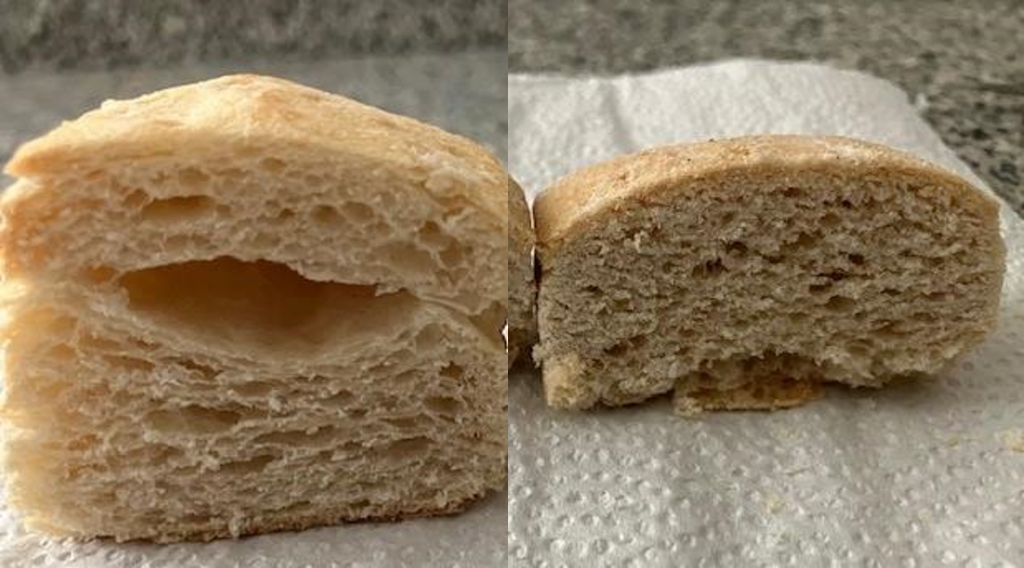
Breads around the World: Criollitos Cordobeses (Argentina)
I take advantage of my time spent in the city of Córdoba, Argentina, to tell you about one of the most consumed breads in this region, one that’s closely associated with it.
The Criollito (I assume the diminutive is because they are small bread rolls) is a laminated bread. We’ve discussed laminated dough in a previous entry, but, in general, the most well-known laminated fermented doughs, such as croissants, are sweet and loaded with sugar and fat. In contrast, the dough for Criollitos is a bread dough, with a formula that is less loaded with sugar.
Although its origin is believed to date back to the late 19th or early 20th century, this is not known with precision. As is often the case with such origins, there are numerous legends. Some attribute it to a mistake in a bakery and a way to use up leftovers, while others mention a version of a European product brought by immigrants due to a lack of certain ingredients. These legends are common in various culinary traditions.
To begin making this bread, we start with a bread formula that includes flour, water (around 50%), fat (20%), salt (2-3%), and yeast (2-3% if it’s compressed yeast). In many formulations, it’s also common to include slightly less than 5% of sugar or an ingredient containing it, such as honey or malt. Of course, this is just one possible formula, and there are many variations depending on the baker, available ingredients, and the desired final product.
The flour used should be of medium or strong strength but not overly tenacious. It should create a good gluten network that can be stretched and can withstand fermentation, retaining the gas formed. In Argentina, flours tend to be stronger than in other countries like Spain, but the required strength will be slightly less than for laminated doughs, which are much richer in sugar. The requirements will also change based on the use of dough conditioners. As in all bread doughs, the use of oxidizing agents, such as ascorbic acid or oxidase enzymes, can help in such preparations, especially with intensive kneading. The amount of water depends on the type of flour, but 50% is a good starting point. The goal is to have a dough that is not too sticky (too much water) but also not excessively tenacious (too little water). It’s important to note that, unlike other bread formulas, this one includes fat, which relaxes the dough.
In Argentina, flours are classified with a series of zeroes, similar to the system in Italy. For making Criollitos, the recommended flours are 000 or 0000. This means they are flours with low ash content, meaning bran has been almost entirely removed. 000 has an ash limit of 0.65%, while 0000 has it at 0.49%. Many internet sources suggest that 000 is slightly stronger than 0000, and the former is often recommended for making Criollitos, although some also recommend the latter or a blend of both. These differences in strength may be real in the commercial flours available in Argentina. However, it’s worth noting that regulations do not specify these differences between the two flours. They do indicate that 000 should have a water absorption of 57-63 and 0000 of 56-62. The slightly lower absorption of the latter is due to its lower bran content and therefore less fibre (which has high water-holding capacity). There doesn’t seem to be a significant difference in protein content or flour strength within certain ranges. In fact, regulations state that loaves made with 0000 flour have more volume than those made with 000, although this information is somewhat imprecise without specifying the baking method. It would indicate slightly less strength in these triple-zero flours. So, as always, be cautious about what you find on the internet (including this blog).
In general, the salt content in this preparation is somewhat high, closer to 3%, but it can be reduced for dietary reasons. Besides strengthening the dough somewhat, the primary function of salt is to enhance the flavours. The amount of yeast and the type can also be adjusted, but, as we will see later, these preparations should not undergo excessive fermentation.
The fat, which can be added once melted or allowed to melt and mix during kneading, is usually pork or beef lard but can be replaced with margarine with a moderately low melting point. This fat, when incorporated into the dough, serves to increase its extensibility. If you increase the fat content, it’s important to increase the flour strength and reduce the water content, and vice versa. This fat is also used to separate the layers in the laminating process. The low melting point of these fats causes them to melt much faster than other fats, partially blending with the dough. Although some homemade preparations recommend refrigerating the dough after each fold, you will never achieve layer separation like in the case of puff pastry, but you will achieve a layered structure. The short fermentation time also results in bread with somewhat less rise and height. For this reason, it’s common to prick the dough before baking.
The practice of adding sugar is not intended to sweeten the final product but to aid in fermentation by providing the primary nutrient yeast needs, rather than relying on enzymatic action on starch, at least in the initial stages. Therefore, it’s important that the sugar content is not too high.
Once the dough is formed, with a well-developed gluten network, like in most bread doughs, it is laminated, with one side coated with fat, and then it’s folded. Unlike other laminated doughs where the fat used has a higher melting point, the fat used in this case is semi-solid at room temperature and can be easily spread on the dough. The number of folds may vary depending on the baker, but as a general idea, one single fold followed by two double folds can be an option. This results in (3x3x4x4) 144 layers.
In some cases, the fat for lamination is mixed with flour in a 1:2 ratio.
Once the laminating process is complete, the dough is rolled out, and square pieces measuring around 4-5 centimetres on each side are cut. These pieces undergo fermentation at approximately 30°C for about 40 minutes and are then placed in an oven at 190-200°C for 20-30 minutes. As you can see, the fermentation time is shorter compared to other types of bread preparations when conducted at these temperatures (in some sandwich bread, the fermentation is similar, but the temperature is slightly higher, around 40°C). This, combined with the relatively low yeast content, results in less expansion and rise of the pieces.
The higher fat content in these breads and their slightly denser texture compared to other preparations contribute to better preservation. The greater density protects against drying out by reducing the surface area exposed, and the fat adds some moisture that remains during the storage of these breads.
In the local market, you can find versions that are somewhat denser and others that are more laminated, with a clearer layer structure, although not as pronounced as in other laminated products. In the lower image, you can see these two types.

When cut in half vertically, the first one shows the layers somewhat better, although still not as distinct as in other laminated pastries. In the second one, the laminated structure is almost lost as the dough layers merge.

Criollitos are also made in other parts of Argentina, but they often go by different names, such as “librillo” (due to their layered structure), “cuadraditos” (for their square shape), or “bizcochitos.” They are not the healthiest bread on the market, given their higher content of saturated fats, salt, and calories. Therefore, they are not the ideal choice to accompany meals and are typically more suited for breakfasts and snacks (to go with mate or coffee), although there are various possibilities and uses.